Bai Tai Sui, She Tai Sui and Hua Tai Sui, all these concepts alone can be complex and intimidating for beginners, not even mentioning the complex timeline and the actual complicated ritual details involved. In this article, I will break down all concepts, timelines of Tai Sui praying ritual, and I will be handholding you, step by step, to go through your first Tai Sui praying ritual from start to finish.
What is Tai Sui?
Tai Sui is short for Tai Sui God, or Tai Sui General. It is a Chinese feng Shui term for the body of personified annual energy that mirrors the ideal trail of Jupiter both celestially and locally in projection. In Chinese folklore, there are sixty Tai Suis, each named after a historical honorable general. Each Tai Sui governs the world of mortals annually in the 60-year sexagenary cycle.
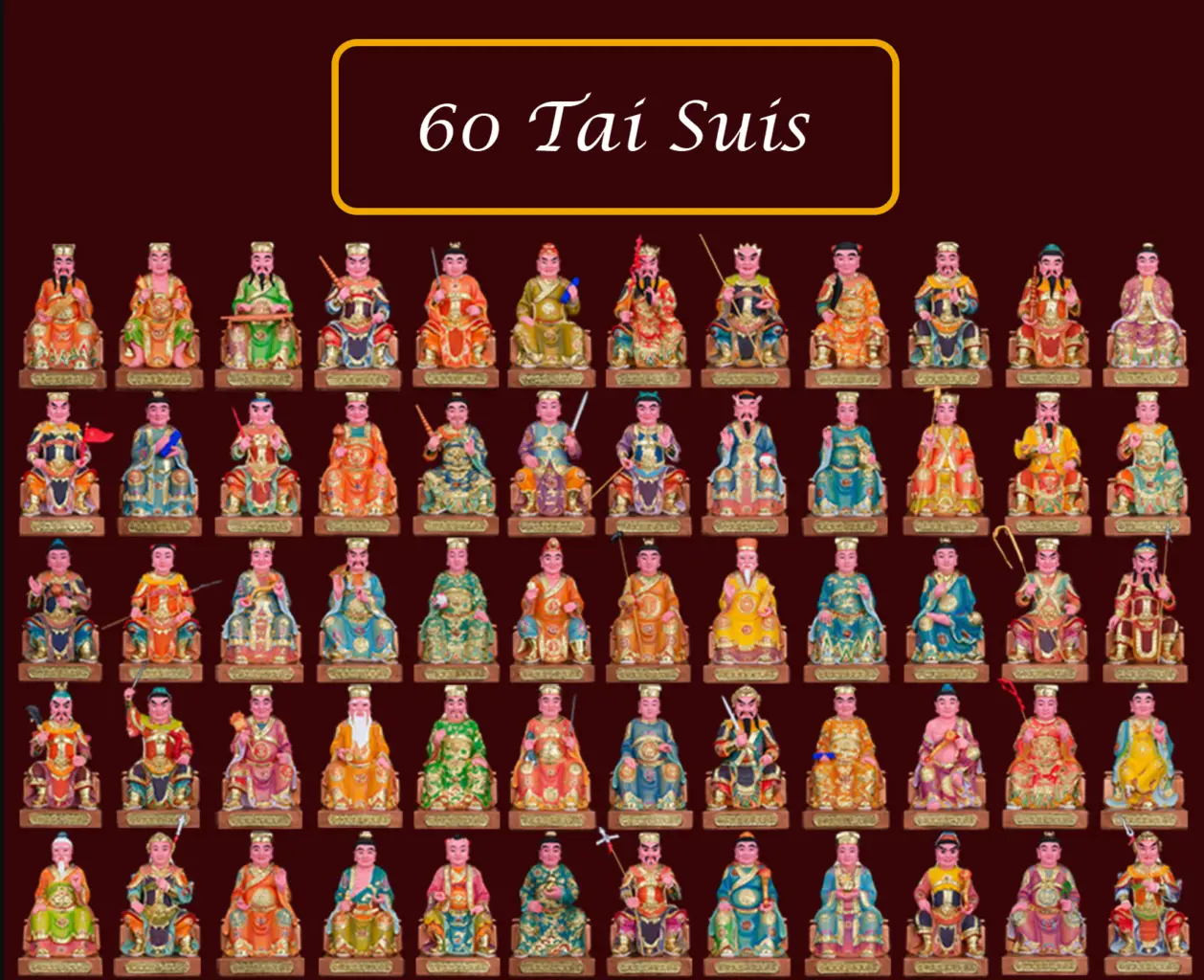
What is Bai Tai Sui (pray to Tai Sui)?
Bai Tai Sui is also known as praying to Tai Sui, the annual God. Bai Tai Sui is a Daoism ritual performed for new year’s safety, protection, and blessing, especially for the group of People considered offending Tai Sui of the year. Bai Tai Sui can be practiced either at temple or at home, which is a very popular annual ritual among Chinese community. As a general rule, the ritual to pray to Tai Sui for the new year can be performed as early as after the lunar new year, or after February 4th, the start of spring of the new year.
Why does Bai Tai Sui matter?
Tai Sui of the year is the God of the year. There are in total of 60 Tai Suis in the 60-year sexagenary cycle. Tai sui of the year has supreme power, overseeing all events of mundane world. Allegedly, a Tai Sui general being selected for the particular year is because this Tai Sui general’s value and life lesson being most applicable to the mundane world of that year. Tai sui of the year has supreme power, overseeing all events of mundane world. Therefore, praying to Tai Sui will assimilate the wisdom of annual god, will prevent people from harm, instability, illness, and financial losses, minimizing harm and transform their fortune.
Hence, praying to Tai Sui, especially for those zodiacs are offending Tai Sui of that year, is considered an important ritual event in most areas of China.
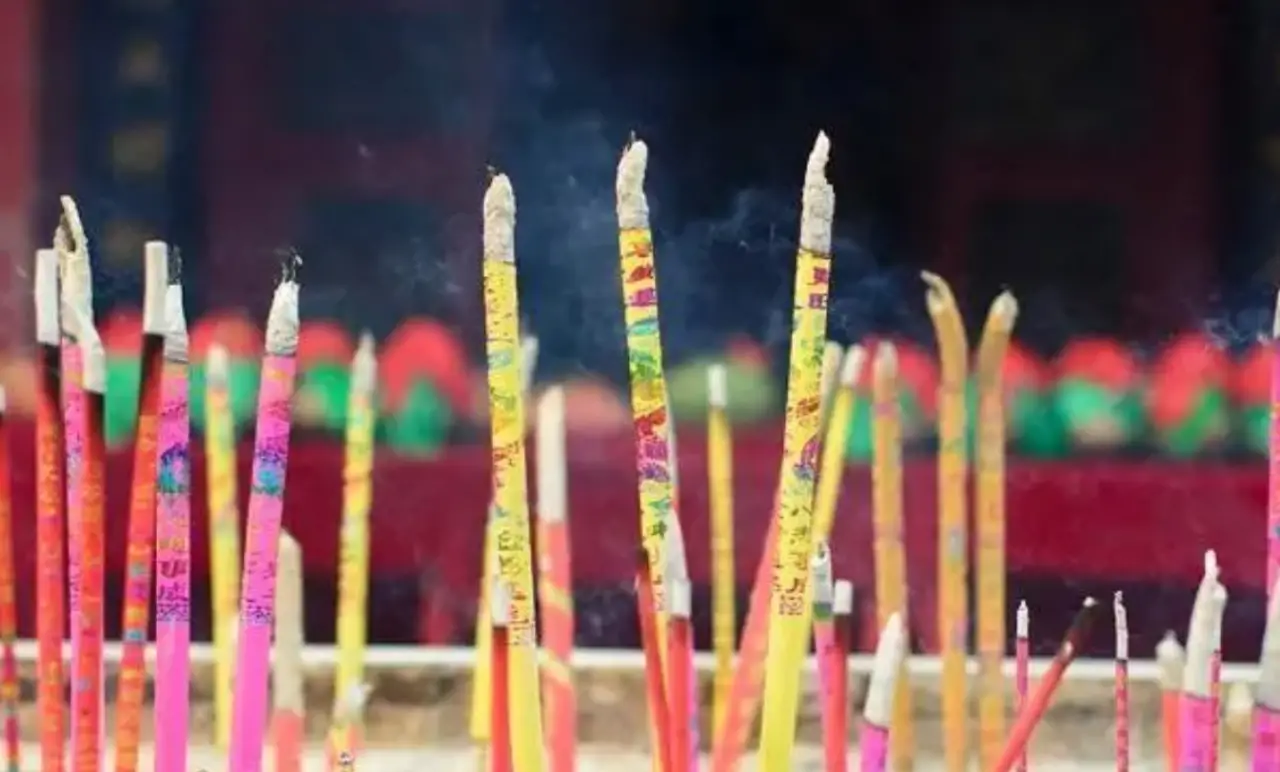
Who needs to pray to Tai Sui?
In general, the group of people suggested to pray to Tai Sui for protection and safety (Bai Tai Sui) are zodiacs offending Tai Sui (Fan Tai Sui) of the year. But anyone can perform this ritual to appease Tai Sui. It depends on the areas and customs, the timeline, ritual preparation, and actual ritual process of praying to Tai Sui can be rather different. I will get into this part in detail later.
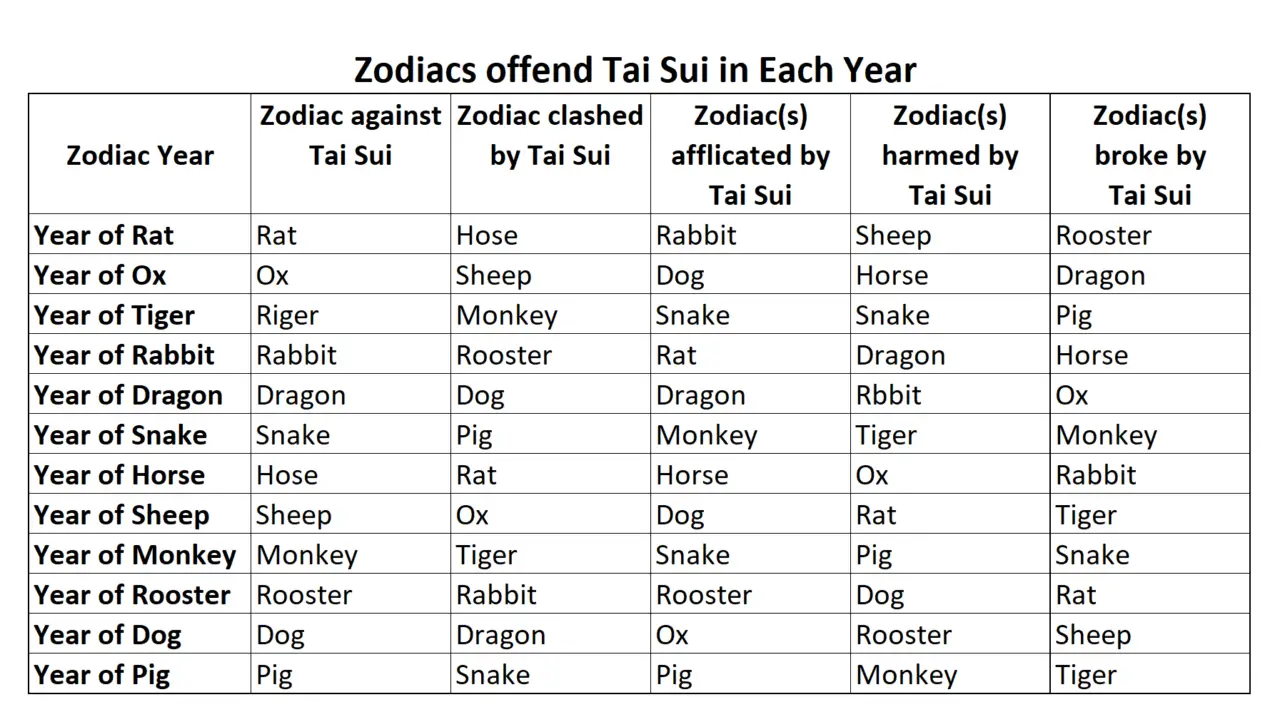
What is the difference between Bai Tai Sui & She Tai Sui?
If you have involved in the ritual in praying to Tai Sui in the beginning of the year, you may have also heard about terms such as She Tai Sui (or Nip Tai Sui in Cantonese), Hua Tai Sui, and Thank Tai Sui.
Bai Tai Sui is really an umbrella term that can be used for all Tai Sui-praying activities and all groups of people in the beginning of the year. “Hua Tai Sui” literally means to resolve the issues of Tai Sui; it is basically a quick and layman version of Bai Tai Sui without much personal information involved.
She Tai Sui, also known as “Nip Tai Sui” in Cantonese, is a special type of Bai Tai Sui designed for zodiacs offending Tai Sui (Fan Tai Sui). She Tai Sui means to learn the wisdom and to follow the way of Tai Sui as the annual Tai Sui general is deemed the way and the wisdom of the year personified, thus minimizing mistakes and wrongdoing. However, the modern ritual process of Bai Tai Sui and She Tai Sui are identical.
According to the Chinese folklore, there are sixty Tai Suis, each named after a historical honorable general. Each Tai Sui governs the world of mortals annually in the 60-year sexagenary cycle. A Tai Sui general being selected as the lead of that particular year because his value and his life lesson being most applicable to the mundane world of that year. For example, in the year of 2025, Tai Sui of Wood Snake is General Wu Sui, who was a general in Song Dynasty (960—1279). Wu Sui was appointed as the magistrate of Xiuning County (modern Xiuning County in Anhui Province) in 1240. Legendary, Wu Sui was highly skilled at uncovering hidden wrongdoings, and neighboring counties would frequently send envoys to seek his counsel and assistance with challenging cases. During a severe drought that year, Wu Sui spent three days and nights praying at the temple, fervently beseeching the deity for rain. His dedication paid off when heavy rains finally arrived.

In addition to this, Wu Sui took significant measures to alleviate the people’s suffering by reducing land taxes and labor levies, thereby providing relief to 48,000 disaster-stricken individuals. At that time, more than 400,000 refugees from the Huai River crossed into Xiuning area. Wu Sui devoted himself to comforting and assisting these displaced people, ensuring they received the care they needed.
In stark contrast to other cities, where the influx of refugees led to incidents of arson, looting, and widespread disorder, Xiuning County remained peaceful and orderly under Wu Sui’s administration. There were no disturbances, and Xiuning County was a safe haven amidst the chaos elsewhere.
The lessons that we can learn from Tai Sui General Wu Sui: in the year Wood Snake 2025, we should focus on the right things in our life and be persistent about it. To remain in a world of chaos, doubts, noise, and instability, we should be dedicated, not only to action, but also devote ourselves to a better vision, tackling our failures and successes with the right attitude. Keep providing value and supporting others, spreading kindness to people nearby. The inner harmony, peace, and calmness will come from your self-discipline and kindness. That is the mindset one should have after praying to Tai Sui, because one is not only praying for Tai Sui’s protection and blessing, but more importantly, applying this mentality and wisdom as the way of his life in this year.
You can check out the latest Tai Sui information for new year here.
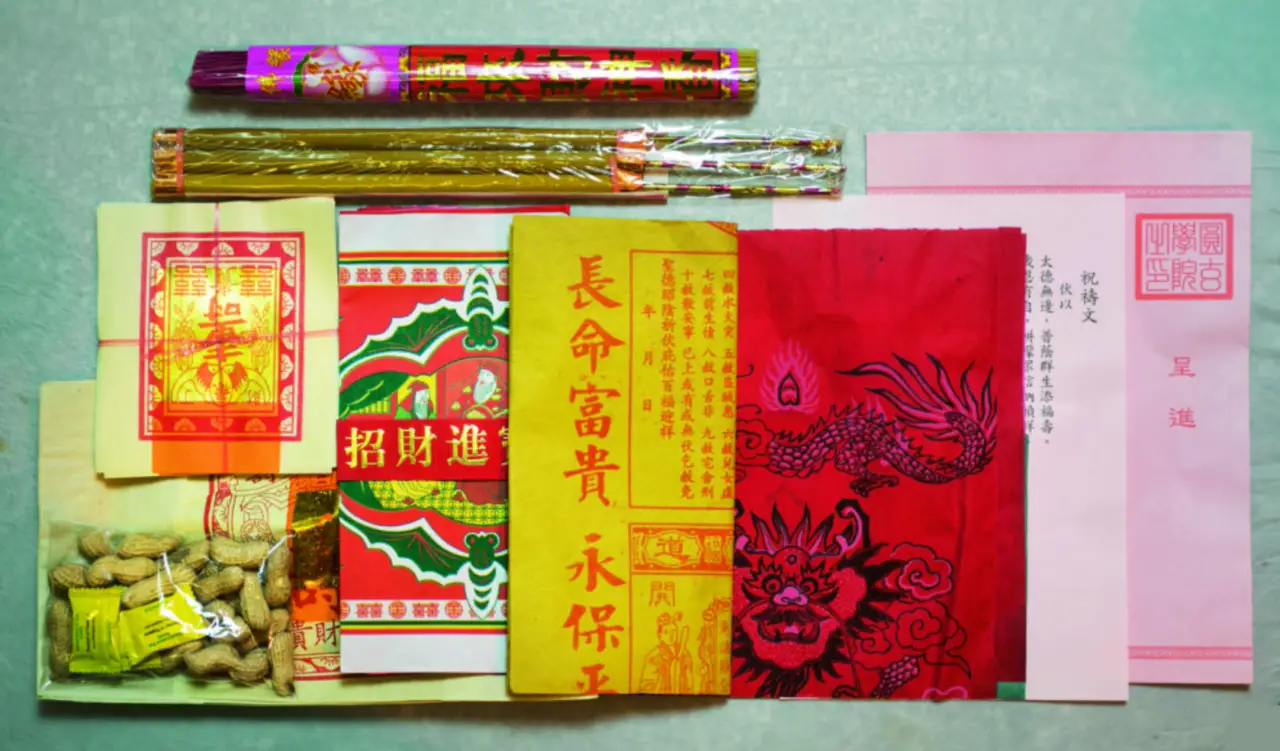
If you already participated in a ritual of Bai Tai Tui, there is another important Tai Sui praying ritual that you must know, that is Thank/Send Tai Sui.
Thank Tai Sui Ritual, though very similar to the Bai Tai Sui, required some individual study regarding its timeline and practice. I will delve into details in this article: How to Thank Tai Sui (Send Tai Sui) – A Beginner’s Guide to Tai Sui Praying Ritual (at temple). The rest of this article will focus on the timeline and the ritual of Bai Tai Sui.
The important timelines for Tai Sui praying rituals
There are many different sayings about the timeline for Tai Sui praying depending on the areas and traditions.
In some areas, Bai Tai Sui ritual is performed between lunar new year and lunar January 15th, the Chinese Lantern festival; while some areas would prefer the ritual to be held close to but after February 4th, the start of spring; there is even a custom of holding the Bai Tai Sui ritual on a specific date, for example, lunar January 8th is often recognized as the popular date to Bai Tai Sui. Allegedly, there was an ancient emperor who prayed to Tai Sui for his mother’s health on lunar January 8th. The Queen Mother, who was very sick at that time, soon recovered. The story was bandied around and, since then, lunar January 8th has been recognized as the traditional date for Tai Sui praying. There are also areas holding the ritual between lunar January 8th and lunar January 15th the Chinese Lantern festival.
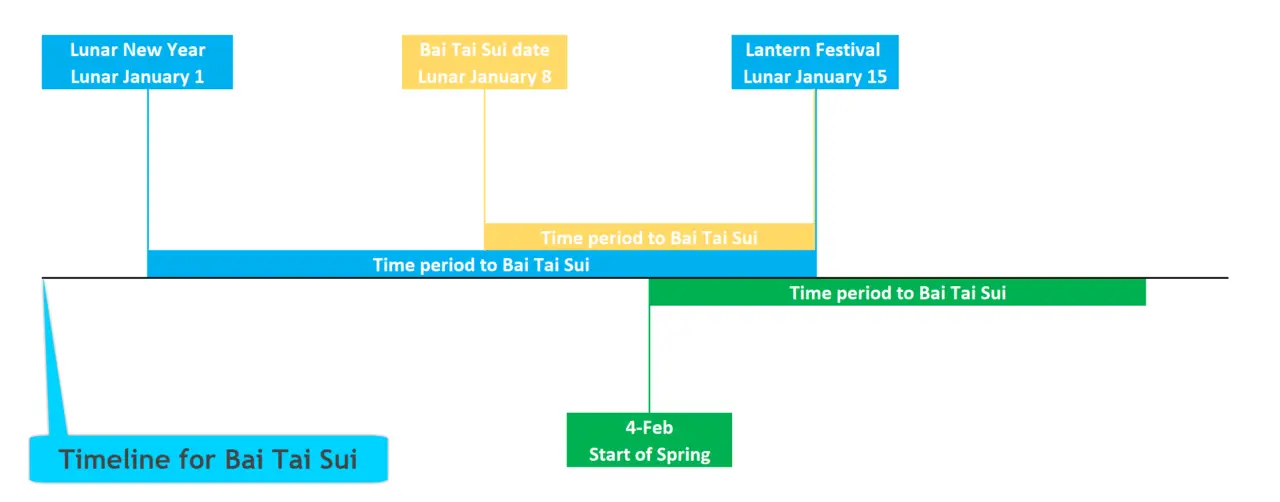
The simple way to think of the ritual time is to understand the essence of Tai Sui. Tai Sui is a pocket of energy that is reflected in both time and space in an annual period. Tai Sui General of each year is basically the energy personified. What divided the energy of the year in Feng shui practice is the start of spring, February 4th. Therefore, as in a general rule, any praying ritual for the new Tai sui should be performed after February 4th; and any praying ritual to express gratitude of the old Tai Sui, Thank/Send Tai Sui, should be performed before February 4th next year. There is not a specific rule of how early or how late you can go before or after February 4th.

As far as you have my bottom line in mind, you can go with any date that would fit your local area’s custom while not in direct conflict with your own zodiac, for example, if you are zodiac rooster, you do not pick a date of zodiac rabbit; if you are a zodiac dog, you do not pick a date of zodiac dragon, etc.
How to Bai Tai Sui – 4 important steps
Though there are some details of Bai Tai Sui, She Tai Sui and Hua Tai Sui are different, most of their ritual processes are similar. I will go through each of them in detail below.
Step 1: Find a temple with Tai Sui shrine.
Most of the Tai Sui praying rituals, regardless of its purpose, can be performed in a local temple. Some temples have a specific division just for annual Tai Sui praying events, which it has 60 individual Tai Sui’s shrines with Dou Mu Yuan Jun , the mother god of all Tai Sui Gods, enshrined in the center as the lead of all Tai Sui gods. Some small temples will have all 60 Tai Sui statue & tablets displayed together on separated them on two sides. As far as they have a dedicated area for Tai Sui shrines, it would be a good place to get started.

If you cannot find a local temple with a Tai Sui shrine, you can check with any of Daoism and Buddhism temple whether they are holding this Tai Sui praying event or providing any annual praying service. Some temples will provide annual praying services for groups or individuals, content and requirement can vary. It may not be exactly a Tai Sui praying ritual, but it is a good alternative if there are no other options available.
If there is no temple in your area at all, people are advised to do it at home. But I do not suggest doing so for beginner. Praying to Tai Sui at home involves adding additional Tai Sui Tablet to the old shrine of the house or setting up a new shrine for Tai Sui (at least you need to find a place to display the Tai Sui Tablet for worship purpose). The position of the original shrine, how you add the Tai Sui Tablet to the shrine, or the new position that you choose to display the Tai Sui Tablet, all matters a lot in terms of Feng Shui impact. It is a complex Feng Shui topic that needs a course for that, and most Feng Shui Practitioners do not do it correctly, not even to mention beginner without any Feng Shui trainings. When you do it wrong, it brings more harm than protection. The steps below will focus on temple praying rituals, but I will provide a step-by-step guideline on how to pray to Tai Sui at home for reference.
Step 2: Prepare for essential items.
If you can find a Tai Sui temple (or a temple with Tai Sui Shrines), you are mostly good to go because most of these temples will aid on preparation services, joss paper and Tai Sui prayer template, incenses and candles are all in a packet for the upcoming prayers to purchase and pick up. Most temples would have an assistant or a receptionist to help beginner to go through the process, some would offer to compile your joss paper in the end and burn it for you.
Most of these temples would have a website and contact information for you to reach. I would suggest give them a call ahead of time for their availability of items and on-site assistance. It will save you a lot of time to purchase and compile these items on your own if you are doing this ritual for the first time.
Having said that, I include the list of items that you need to prepare for Tai Sui praying ritual. Please remember some items and requirement can be slightly different depending on the local custom. But the list below should cover most essential items you need to carry to that temple in case they do not provide any onsite service.
Bai Tai Sui required items are tribute and Joss paper packet.
The items you need to bring for Bai Tai Sui/She Tai Sui/Hua Tai Sui:
Bai Tai Sui Tributes: Highly recommend using vegetarian dishes because some temples are Buddhist temples and meat is prohibited. Fruits, candies, bean cakes are universally accepted in any temples.
Popular items include:
- Fruit (avoid melon). Some areas prefer 5 types of fruits to represent five elements, but not a necessary practice. Great options are apples, grapes, tangerines, oranges, red dates, dragon fruits, bananas, grapefruits, Persimmon, etc.
- Candies, cookies; biscuit; crackers or bean cakes
Some areas also use flowers, tea leaves, and even lamp oil; however, these are not essential items.
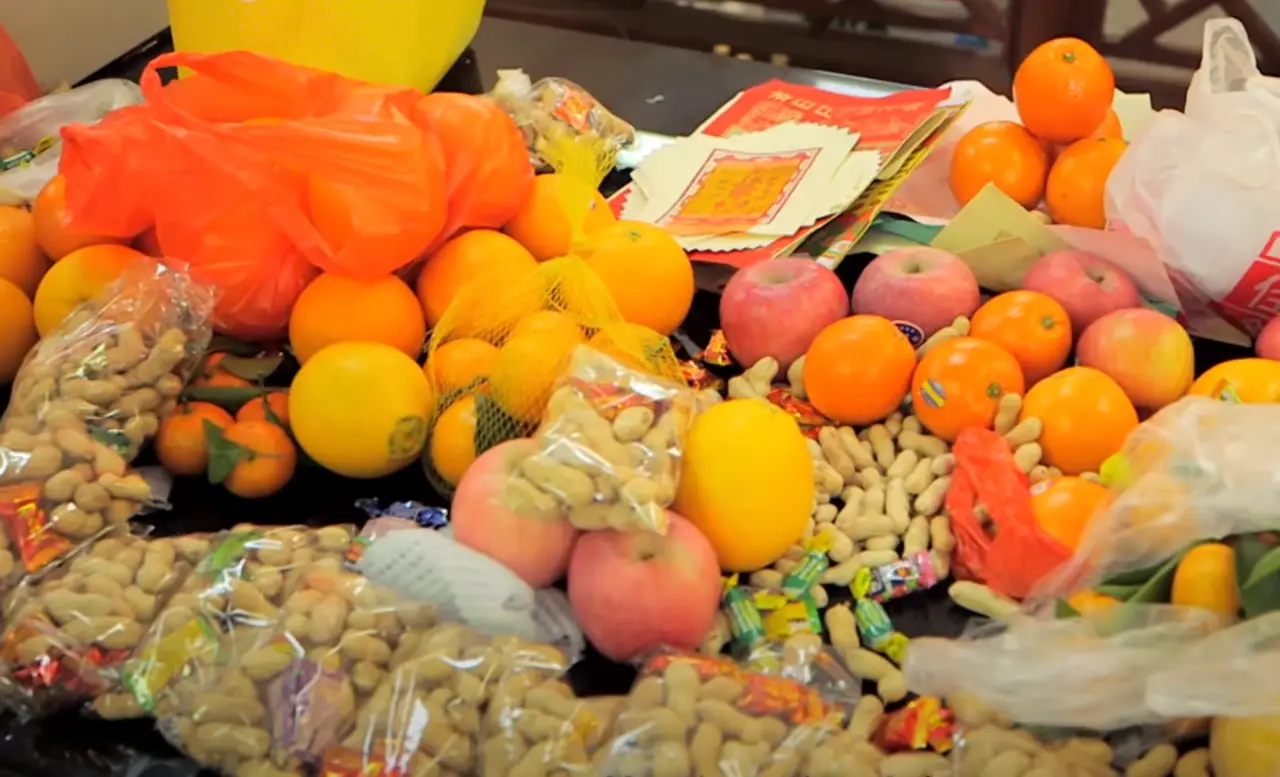
Bai Tai Sui Joss paper packet:
- A stack or multiple stacks of the joss paper.
There are so many varieties Joss paper packet in terms of pattern, design, names, and combinations, some including paper ingots and other symbolic tribute items made of joss paper. You can go with any combinations the local temple or stores providing to you, but all you need is one regular set of joss paper. I include couple popular joss paper below for your reference.

- A pair of candles or more.

- Number of Incenses depending on the ritual practice. If it is a big temple with 60 individual Tai Sui shrine, you are expected to put down on incense for each Tai Sui; so, you will need around 70 incense sticks and three thick incense sticks for leading Lady Mother of all Tai Suis (will explain later); if it is a small temple, you may only need three sticks for the incense holders in the entry of the hall.

- Tai Sui prayer form to fill out your personal information. The Tai Sui prayer form is a template that is often included in the Tai Sui praying joss paper packet. Though the wording of the template may read a bit differently, but it basically an expression of respect and pray for safety, protection, and health of four seasons. The most important part is to fill out the prayer’s personal information, such as name, address, age, time of birth, etc.
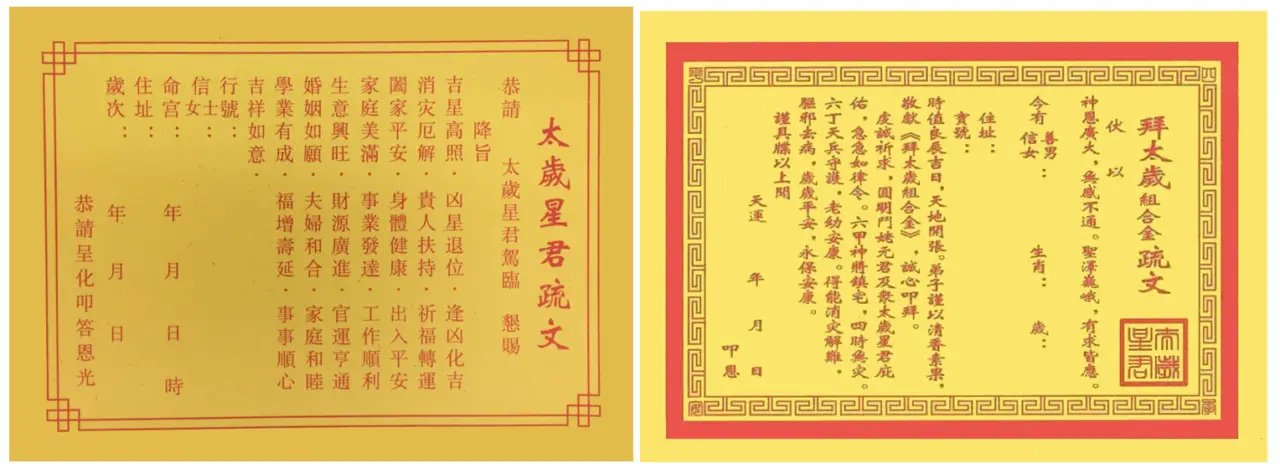
I include couple sample and how to fill one out in the pictures below. If there is no available template, you can just write down your personal information on a piece of the joss paper. Or simply write down your personal information on a piece of red paper and put it inside a red envelop.

- Tai Sui talisman. There is a popular saying that the male should carry the Ying talisman (yellow one) while the female should carry the Yang talisman (red one). It is incorrect. The right method is, regardless of their gender, for people who were born in Yang year should carry the yellow one, while people who were born in Ying year should carry the red one. The Ying years refer to the zodiac year of the Ox, Rabbit, Snake, Sheep, Rooster, and Pig, the Yang years refer to the zodiac year of the Rat, Tiger, Dragon, Horse, Monkey, and Dog. You can either burn this talisman together with the joss paper at the end of the ritual, or keep the talisman in your house, or your purse. If you keep it with you for the rest of the year, you will also need to bring this back for the ritual of Thank Tai Sui. Please note that, in authentic practices, these two talismans are actually used as tablets for annual Tai Sui altar at home. It needs a series of complex rituals to invite the Tai Sui into house to make this the whole practice valid. For averaged people, I would recommend using a customized consecrated Tai Sui talisman.

Once you have all the items mentioned ready or know that the temple will provide what you need onsite, you can start selecting a date to perform this ritual.
However, please bear in mind that most of the talismans in the market are very generic printed copies, not tailored for individuals, not even to mention going through an authentic consecrated ritual by a Dao master. Therefore, these so-called talismans are merely pieces of paper, or at their best, a good calligraphic drawing, but they bear no spiritual power of protection and guardian at all.
If you are interested in how to pick the best Tai Sui Amulet/Talisman, I have a deep-dive article on this subject: A Beginner’s Guide to the Best Tai Sui Amulet/Talisman
For those who suffer low fortune in different aspects of life and want to ward off the impact of negative energy, they can consider wearing a customized consecrated Tai Sui talisman. This talisman is strictly consecrated and activated, following my Dao lineage Quan Zhen school, which has over one thousand years’ history of creating powerful Daoism magic. It is a great protection tool for one to improve the general fortune in 2025.
Step 3: Pick an auspicious date.
You may already have a basic understanding of Bai Tai Sui timeline based on my prior topics. You then need to pick a good date among the dates available to you. The general rule is to avoid performing the ritual on a date that is clash with your zodiac. For example, if you are zodiac rooster, you do not go to the temple on the date of zodiac Rabbit; if you are a zodiac Tiger, you do not pick the date of zodiac Monkey, etc. You can refer to a Chinese Almanac for the details of the date.
Step 4: Universal ritual processes at the temple.
Once you finalize the date, please make sure the temple is open and available. Take a shower and do a short meditation the night before if possible. Double-check if all essential items are ready to go. When you go to temple to Bai Tai Sui, it is advised to put on your formal and clean dress, avoid wearing capris, shorts, tank tops, etc. Take a shower the night before and do a meditation if possible.
Once you arrive the temple, if there is an assistant or a receptionist, you can ask their advice on how you should proceed from there. If there is no helper available, please take a few minutes to observe what other people have been doing in that place as the customs and setting can be varied in each area and each temple. I include the general procedures below; however, please make sure to follow the rules and requirements of the local temple you visited.
1. Find the right incense holder for the hall. If the incense holder is placed outside of the hall, what you need to do is to light a pair of candles first and put them on the big incense holder; then light the three thick incense sticks from your joss paper packet, with three incense sticks in hands, bow and pray to the direction of the hall, and use your left hand to put them in the big incense holder before you enter the hall. (If the incense holder is placed inside the hall, simply perform the same ritual inside the hall but pray directly to Doumu (or known as Doumu Yuan Jun) in the central shrine, see the step below).

2. Then enter the hall, properly lay all the tributes and the joss paper packet on the table, gassho, bow, and pray to Doumu in the central shrine, the leading goddess for all 60 Tai Suis. Doumu is known as the Lady Mother of the Chariot, who is the feminine aspect of the cosmic God of Heaven.


3. After expressing your respect to the Doumu, you can start to look for the shrine/statue of annual Tai Sui. Big temples with Tai Sui shrines would evenly display each Tai Sui’s shrine in a circular manner or on two sides of the hall. These temples would often provide a table numbering each Tai Sui for your reference. The annual Tai Sui shrine is often decorated with a banner behind.

4. Once you find the annual Tai Sui shrine, you can walk to the front of Tai Sui shrine, gassho, bow and say your prayers with your personal information included, finally then lay three unlit incense sticks in front of the shrine. (Some temples also have a box under each Tai Sui for people to put the prayer paper or personal information in).
5. After praying to the annual Tai Sui, you will need to find the Tai Sui of your birth year. There are usually year of birth information next to a Tai Sui shrine for reference. Once you find out the Tai Sui of your birth year, just walk to the front of shrine, gassho, bow and say your prayers with your personal information included, finally then lay three unlit incense sticks in front of the shrine.
**** When you say your prayer to Doumu, the annual Tai Sui and the Tai Sui of your birth year, please make sure you introduce yourself with name, age, time of birth, and address. ****
6. After you have prayed to Doumu, annual Tai Sui and Tai Sui of your birth year, what you need to do is to express respect to the rest of 58 Tai Suis following a clockwise direction. You do not need to say prayer anymore, a simple gassho and bow in front of each Tai Sui and lay an incense stick will be sufficient.
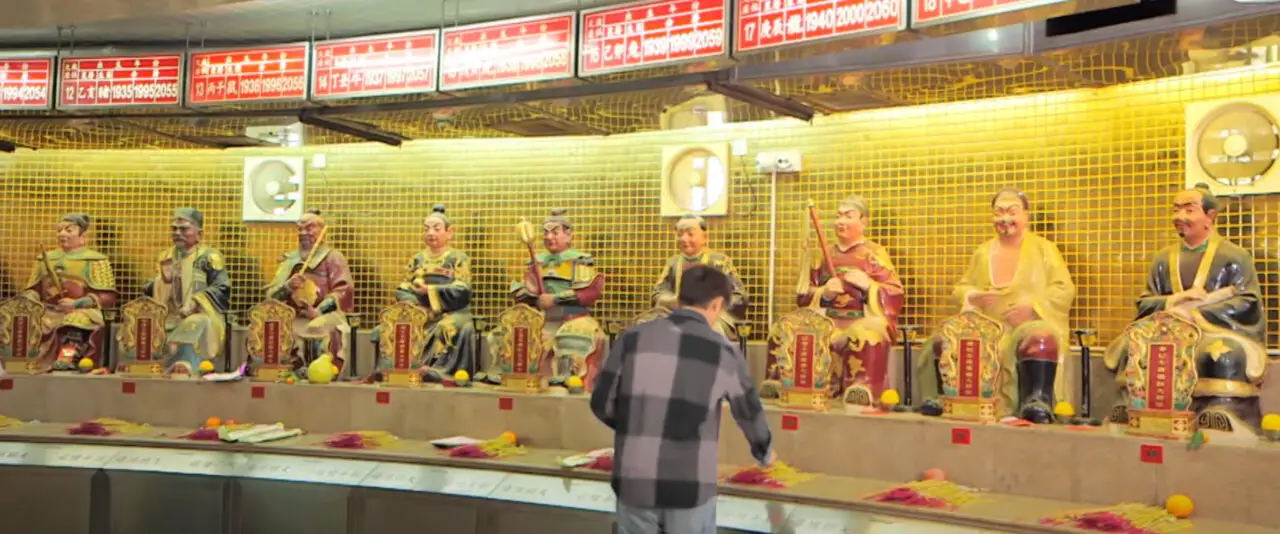
7. Now you are done with all the praying part, you just need to find the fireplace to burn the joss paper. There is usually a temple staff member handling joss paper packets from the prayers. All you need to do is to hand him/her the rest of joss paper packet, including joss paper combo, the Tai Sui prayer paper you filled out earlier, you can choose to keep or burn the Tai Sui talisman if it was included in the joss paper packet. But if you keep it, you will need to burn the talisman after Thank Tai Sui ritual in the end of the year.

8. That is it for all the complete ritual of Bai Tai Sui at temple. Some temples will hand you a Tai Sui talisman separately, you can either keep it in your purse and put it in the corresponding Tai Sui corner of the year. For example, in 2025, the year of the Snake, you can display the Tai Sui talisman in the southeast region of your house.
Above all these
The steps above are the complete processes of Bai Tai Sui at temple. The She Tai Sui processes are the same as general Bai Tai Sui I listed above, while the ritual of Hua Tai Sui simplifies most of the processes and skips the step of including personal information in the prayer paper and usually is geared toward beginners with no guideline.
Please bear in the mind that the names, methods, or details do not matter as much as average people stated, because there is one thing that goes above all these rules and beliefs, that is the prayer’s pious state during the prayer ritual. This mentality will connect and communicate prayers’ inner thoughts to Tai Sui, integrating, and harmonizing prayers’ energy flow to Tai Sui that manifested in the rhythm of time and space, which is the most important part of the Tai Sui ritual.

I’m excited to share a project I’m working on to help people deepen their understanding of classical feng shui systematically and practically. As part of this initiative, I’m offering a free consulting survey where I’ll also personally answer your questions. Participants who have taken part in this survey have walked away with valuable insights and a sense of clarity.
If you’re eager to learn authentic feng shui that can truly transform your life or feel overwhelmed by conflicting theories, this is the perfect opportunity to gain clarity and real guidance. Don’t miss this chance to elevate your knowledge and align your environment for success!

This is a free session, but spots are filling up fast! Don’t miss your chance—join my Facebook Group and send me a PM for more details. Let’s get started on transforming your life with classical feng shui!


